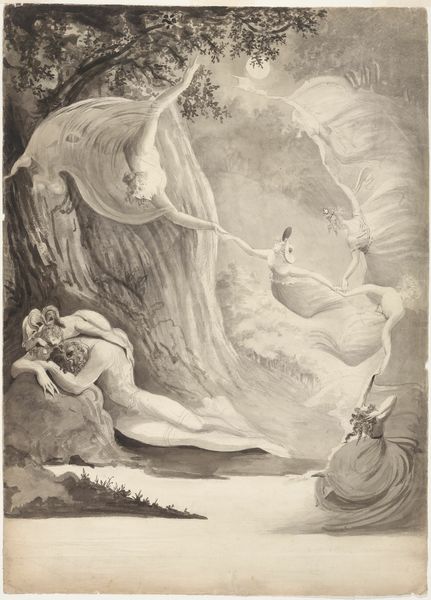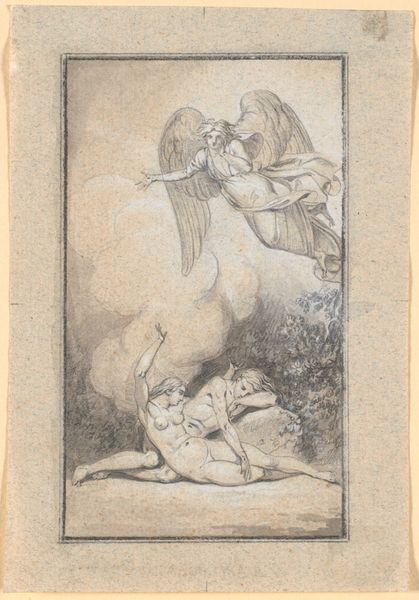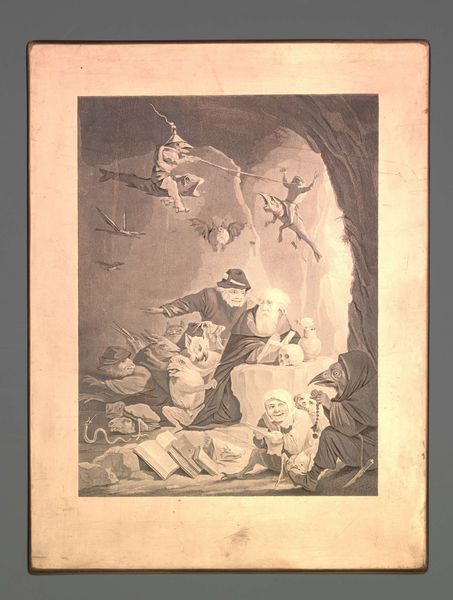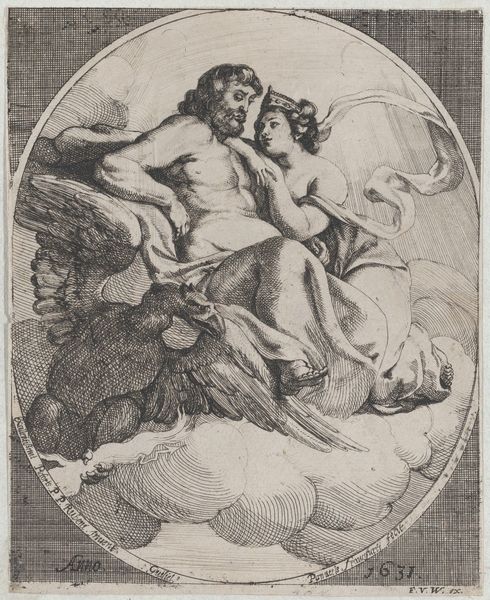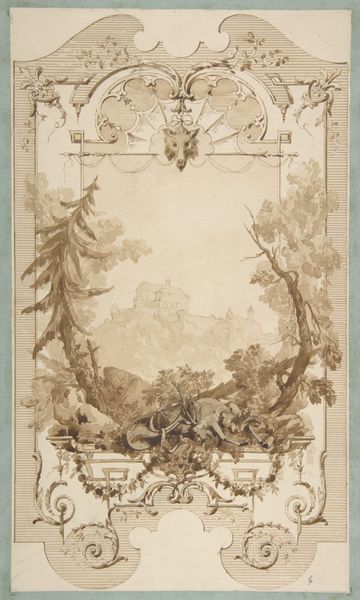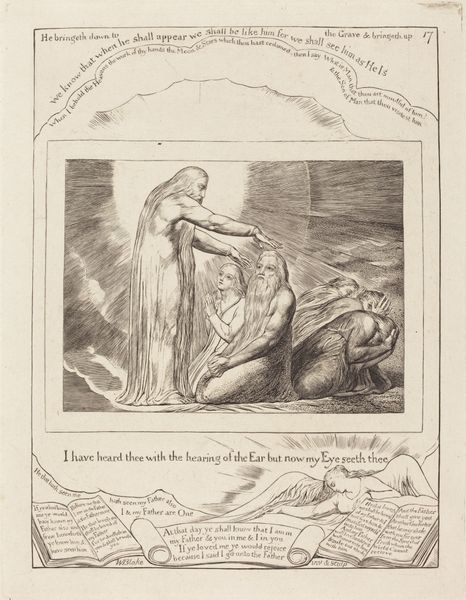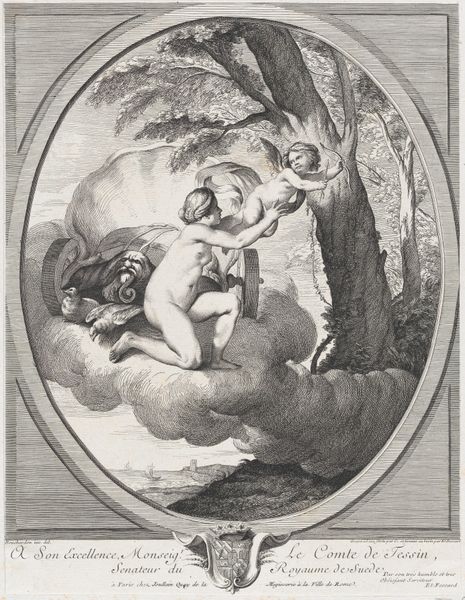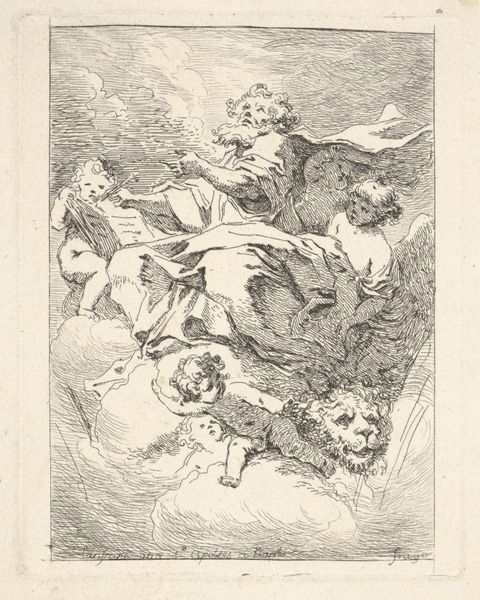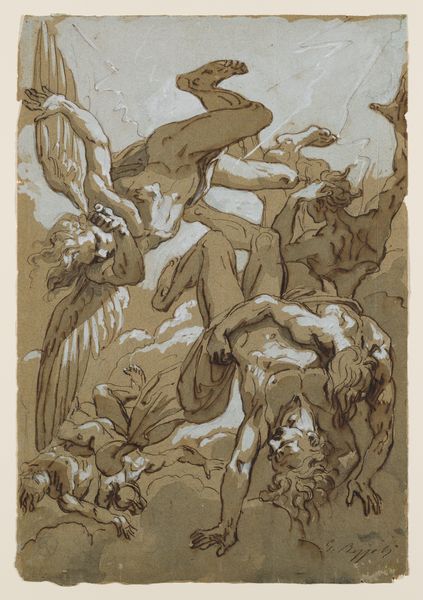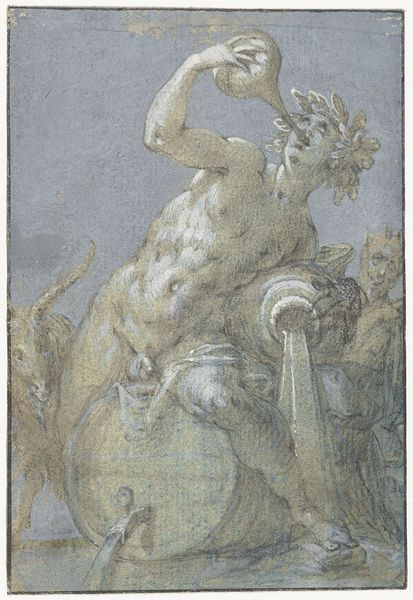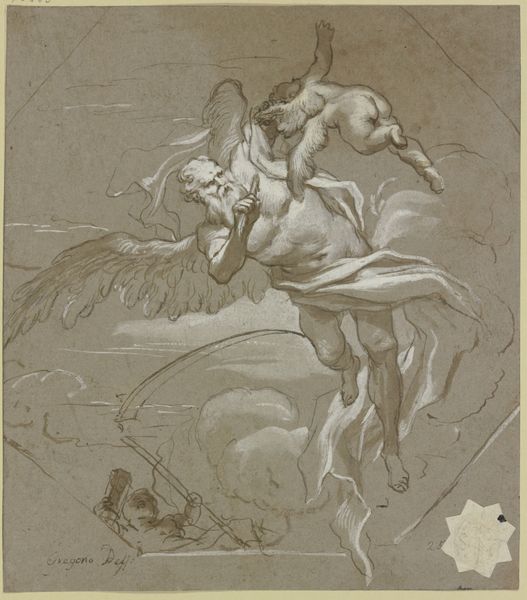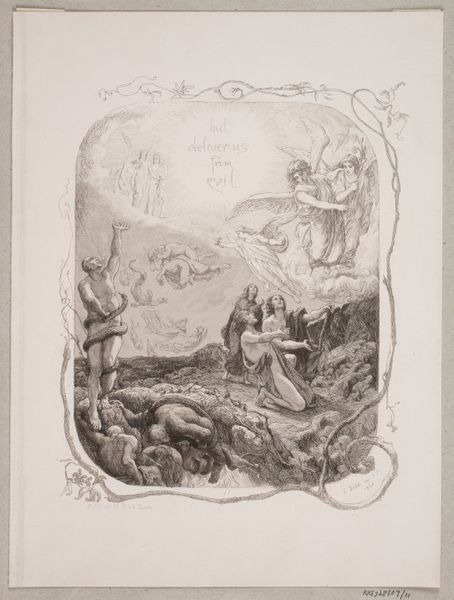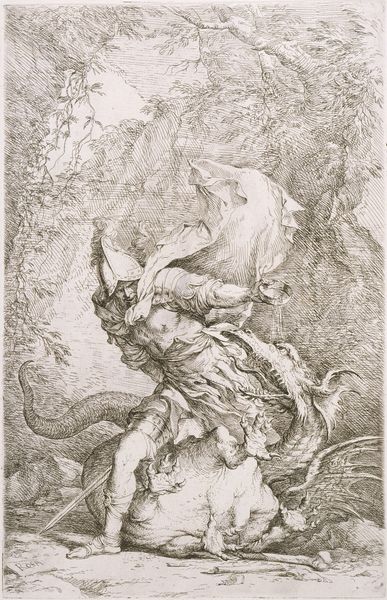
Jupiter couvre la Terre de Nuages pour jouir d'Io Possibly 1767 - 1771
0:00
0:00
drawing, watercolor, pencil
#
drawing
#
allegory
#
figuration
#
watercolor
#
pencil
#
watercolour illustration
#
academic-art
#
nude
#
pencil art
#
rococo
Copyright: National Gallery of Art: CC0 1.0
Curator: Charles Monnet's drawing, "Jupiter couvre la Terre de Nuages pour jouir d'Io," created somewhere between 1767 and 1771, offers a fascinating glimpse into Rococo sensibilities. The work combines pencil and watercolor. What's your initial reaction to this piece? Editor: Honestly, I see a troubling narrative of power and manipulation disguised in a beautiful, albeit unsettling, wash of browns and creams. The way Io is positioned, supine and seemingly vulnerable amidst all these clouds... it doesn't sit right. Curator: I'd say it's the dynamism of the composition that strikes me first. The swirling clouds, rendered with delicate pencil strokes, create a sense of upward movement, drawing the eye toward Jupiter's almost mischievous expression. Consider how Monnet has distributed light and shadow to model form... Editor: I can't ignore the story it's telling, though. Jupiter’s 'enjoyment' of Io, concealed under a veil of clouds – it's a classic example of the powerful exploiting the vulnerable, framed by mythology. These weren’t harmless stories, and framing it as 'enjoyment' seems rather anachronistic and minimizes potential harm. Curator: But it’s through the very visual language of Rococo – the delicate lines, the emphasis on pleasure and sensuality – that Monnet engages in commentary on power and beauty. There is a visual layering. What's depicted isn't exactly what it *is*. Editor: That’s true, and these mythological scenes gave artists freedom to comment on contemporary affairs while dodging censure. By situating this 'enjoyment' in mythology, it subtly questions how social hierarchies legitimize abuse through similar means of concealment and obfuscation. Are the clouds really hiding the act, or enabling it? Curator: It's this tension, isn't it, between the visual delight and the underlying allegory, that makes it compelling. It epitomizes how academic art could encode ideas. Editor: Absolutely. Understanding the artwork is also about deciphering its contribution to dialogues around representation and social justice—how it engages with them or, perhaps, how it fails. That tension itself holds value, it can be quite revealing.
Comments
No comments
Be the first to comment and join the conversation on the ultimate creative platform.
